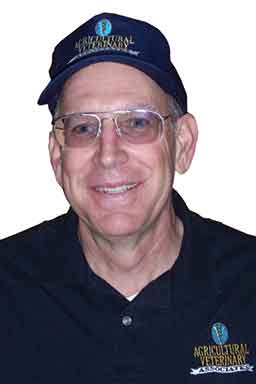Member forum – Sept 2013: Paying it forward
As I reflect upon my relationship with AASV (originally American Association of Swine Practitioners; AASP) and AVMA, it becomes evident how fortuitous that relationship was to the development of my swine practice experience. Graduating in 1979 from the Ohio State Veterinary College, I returned to my home town of Hershey, Pennsylvania, to become an associate in an all-species practice. My passion was for food-animal medicine, and within 18 months I had become involved in a new concept for Pennsylvania: 500-sow farrow-to-nursery total confinement swine-production buildings. Quickly, this developed into a swine practice and a food-animal practice that today continues exclusively as a food-animal practice employing nine veterinarians in primarily dairy and swine.
I vividly recall the first AASP meeting in Cincinnati, Ohio. Yes, I was overwhelmed by the format of having to select presentations and move from one room to another. However, I recognized that this association was foundational to my continued applied swine medicine. It was at the next meeting that I developed lifelong professional friendships with Larry Rueff and Tom Gillespie, also 1979 graduates of other veterinary colleges.
Pennsylvania swine practice in the 1980s to 1990s was primarily focused on pseudorabies eradication. Key to a successful eradication was effectively marked (gene-deleted) vaccines and many 800- to 900-sample days. Concurrently, lice and mange were eliminated from confinement swine production with an injectable product. WOW! However, the nemesis, porcine reproductive and respiratory syndrome, was diagnosed in 1989, and we still struggle to find a methodology to eliminate its impact. Animal flow changed rapidly in Pennsylvania in allocation of two-site production from breeding-nursery and grower-finisher to breeding and wean-to-finish. Observing the dynamic growth of artificial insemination, AASP proactively published Boar Stud Guidelines in the 1990s in Pennsylvania, nationally, and internationally to assist in standardizing this valuable advancement in swine production. For me, the AASP was invaluable in the formal and informal educational processing of concepts and application.
One of my first service positions with AASP was as an alternate delegate to the AVMA House of Delegates. This was a 6-year term, with 3 years of training as an alternate followed by 3 years as a delegate. Dr Connor mentored me, and we both endured the glacial speed of action or inaction of the meetings. I have come to appreciate that sometimes even when the AVMA was slow in acting, it was validating a concept. This experience with the House of Delegates has acted as a model for AASV members to move into other areas of the AVMA where it is critical that we be present for our voice to be heard.
Yes, I was now in the pipeline serving on the Council on Veterinary Service with biannual trips to Chicago, requiring a large notebook of agenda material to be covered. Since 2010, we have gone almost paperless. The majority of my time was spent in policy revision and proposal of actions for the executive board. With the electronic age, the standard of operation involves my engagement in monthly conference calls and daily e-mails, along with clients’ requests. As my term was expiring, Tom Burkgren gently suggested that I serve on the Animal Agriculture Liaison Committee (AALC). Wow, this is an action-packed group of veterinarians representing food-animal medicine. I look forward to each biannual Chicago meeting, as we always have an energetic meeting. The key question moving forward is will the voice representing food-animal medicine and AASV be heard by AVMA with the new governance proposals. We at the AALC are concerned and have put forward candidates to voice our concerns. Over the course of my service, we have repeatedly been dismissed or overlooked by the AVMA as a resource in key food-animal issues.
During my tenure with the various committees and councils, the most validating action has been the passage of the Veterinary Medicine Loan Repayment Act and its funding many years later. Additionally, the enactment of the electronic USDA Re-Accreditation for Regulatory Medicine without fees was a 6-year process. The AVMA agenda format change from reactive to more pro-active, which is still a work in progress, has motivated and inspired me to continue to serve and make improvements for future veterinarians. Still not adequately addressed, and an issue that will determine the survival of the veterinary professional, is the current graduate’s debt to first-year income. The equation must become 1:1 or less to be competitive with other professions.
As I approach my golden years of practice, one of the keys to my success has been the relationship with and service to AASV. My family have been extremely tolerant of the meetings I attend. However, they are the first to admit that we have gone places and done things that they could only dream of doing. I give thanks for the opportunity to have been asked to serve. In this reflection, the growth and vitality of AASV is validating. I hope in some small way I have passed on an incentive for future AASV members to step forward and serve.
— Timothy P. Trayer, DVM
Agricultural Veterinary Associates Lititz, Pennsylvania
